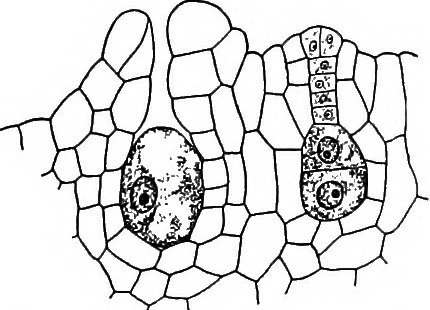The key difference between anticlinal and periclinal division is that in anticlinal division, cell division takes place at a perpendicular angle to the plane of division whereas periclinal division takes place parallel to the plane of division.
Cell division is an important process to maintain continuity of life. Cell division involves the two main processes – mitosis and meiosis. However, in relation to plants, the direction at which the cell division process occurs directly impacts the girth of the plant. Therefore, it is important to deduce how the two main types – anticlinal and periclinal division – play a key role in plant growth.
CONTENTS
1. Overview and Key Difference
2. What is Anticlinal Division
3. What is Periclinal Division
4. Similarities Between Anticlinal and Periclinal Division
5. Side by Side Comparison – Anticlinal and Periclinal Division in Tabular Form
6. Summary
What is Anticlinal Division?
Plant cell division is a process that involves the major stages of cell division similar to that of animals. In anticlinal division, the plane of division lies at a right angle to the surface of the plant body. This type of division is mainly seen in plants and rarely observed in animals. Due to anticlinal division, the thickness of the plant increases. Therefore, the circumference of the plant increases, resulting in an increased girth of the plant. Anticlinal division is mostly seen in the meristematic tissues of the plant.

Figure 01: Anticlinal and Periclinal Division
What is Periclinal Division?
Periclinal division is a process that involves the division of cells parallel to the plane of division. Due to this pattern of cell division, the plant or the organism increases in length as opposed to thickness, leading to the increased girth of the organism. This pattern of cell division is also observed in plants mostly while some animals show periclinal division at an embryonic stage. The plant stems and roots show periclinal division that results in an increase of height in the plant.
What are the Similarities Between Anticlinal and Periclinal Division?
- Anticlinal and periclinal division take place in plants.
- They may occur in some animals on rare occasions.
- Both facilitate cell division.
- Moreover, both can be defined in terms of the plane of cell division.
- Meristematic cells show great potential towards both anticlinal and periclinal division.
- Both forms of division lead to an increase of girth of the plant.
What is the Difference Between Anticlinal and Periclinal Division?
The phenomenon of division in both scenarios of anticlinal and periclinal division remains the same. However, the key difference between anticlinal and periclinal division is the plane of division. Furthermore, while anticlinal division takes place perpendicularly to the plane of division, periclinal division takes place parallel to the plane of division. Due to this key feature, the outcomes of cell division also vary. Anticlinal division increases the thickness and circumference of the plant while periclinal division increases the length of the plant.
The below infographic summarizes the difference between anticlinal and periclinal division.

Summary – Anticlinal vs Periclinal Division
Anticlinal and periclinal cell division are important phenomena in plant cell division. The key difference between anticlinal and periclinal division lies on the basis of the direction of division from the plane of division. In this regard, anticlinal division takes place at an angle perpendicular (ninety degrees) to the plane of division. In contrast, periclinal division takes place parallel to the plane of cell division. Anticlinal division increases the thickness and circumference of the plant while periclinal division increases the length of the plant.
Reference:
1. Armour, William J, et al. “Differential Growth in Periclinal and Anticlinal Walls during Lobe Formation in Arabidopsis Cotyledon Pavement Cells.” The Plant Cell, American Society of Plant Biologists, Sept. 2015, Available here.
2. “Understanding Anticlinal and Periclinal Cell Division.” Toppr Bytes, 12 Apr. 2019, Available here.
Image Courtesy:
1. “Image from page 120 of “A textbook of botany for colleges and universities ..” (1910)” By Internet Archive Book Image (No known copyright restrictions) via Flickr
ncG1vNJzZmivp6x7pbXFn5yrnZ6YsqOx07CcnqZemLyue8OinZ%2Bdopq7pLGMm5ytr5Wau26tza2gnKSZo66tecCnm2aolae2pLjIp5ilZZSew6q%2FyKilaA%3D%3D